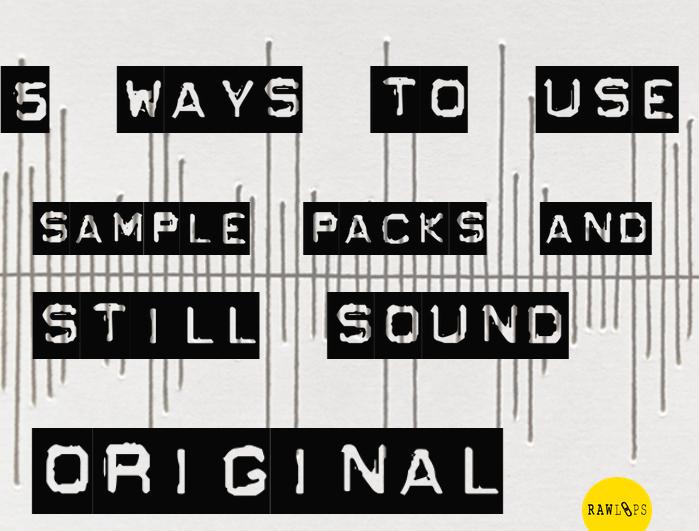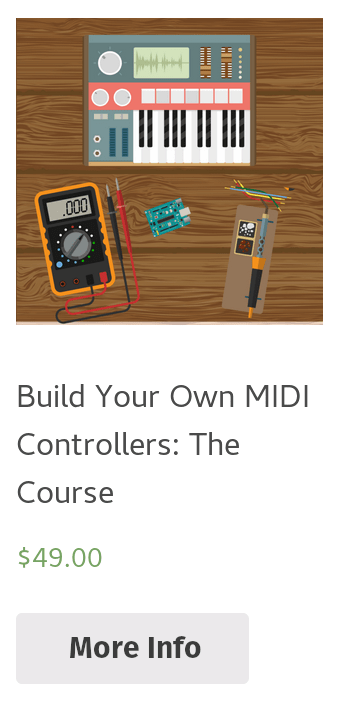5 Ways to use samples and still sound original!

This is a guest post written by Raw Loops. If you enjoy this article, you might also want to checkout their website. They offer a growing amount of quality samples as well as plenty of free tutorials.
Nowadays, with such a fierce market for artists, we strive to create high quality content raising the level for producers to stand out from others.
With these 5 tips, you’ll learn some key sampling techniques that will help you completely transform out-of-the-box samples to something you can call your own.
1. Layering
From one-shots to loops, layering can give your sound a whole new life.
For hits, first pull up your favorite sample-based drum machine plugin. With a simple 2-step process of loading up multiple sounds in the same category (i.e. two different hats, kicks, synths etc) and essentially balancing them (EQing them against each other and making sure you are picking sounds with different strengths), you can achieve a whole new sound!
For example, one sound might have a good high-end while the other has a good mid-low end. Or maybe one sound has a good attack and the other a great decay.
Layering is truly the secret to creating your own sounds from samples. In order to match your records and make them stand out, layering is a must.
Another form of layering is loop-based layering.
It is slightly different. You will hear it abundantly in high energy music and certain forms of techno or tech house.
For example, loading up several different hi-hat loops and EQing them against each other will make sure they mesh well together rhythmically.
The key to get them working together is to have them well balanced and in a proper space in your mix (some low while others high, some left with others right or even on top of each other). The idea is to make it sound together as a whole.
2. Modulation
Modulation is all about FX and moving the different parameters to really take a simple 1 bar loop to the next level.
There are many different things you can do with modulation and the possibilities are endless.
One basic, yet very impactful trick is to load up a 1-bar loop. Duplicate it over 8 bars, add a delay effect to the track, add a basic 16th note rhythm (make sure there’s no feedback) and then turn the delay all the way dry.
Next you will open up the automation lane of your track for the dry/wet parameter. Draw in different points taking the dry/wet to 50% for 16th note rhythms randomly over the 8 bars. Therefore you will bring some sparseness into the rhythm of the track with it sounding not so “loopy”.
This will overall make it much more dynamic, funky and interesting for the listener. This concept works for just about any effect from filters to reverbs.
3. Slice & Chop
Slicing and chopping is exactly what it sounds like.
To do it, cut different loops, take different sounds from each one and then work on combining them in a cohesive sort of way.
Midi Lifestyle Quick-tip: Instead of chopping up the loops on one track, move each section of your new chopped loop onto multiple tracks. Add different effects onto each track and pan them all differently to create some funky stereo effects.
4. Resampling
Resampling is another great technique that involves constantly committing to your sound and bouncing it down to audio while adding new effects each time.
It might take a bit of practice, but once you get good at it, you’ll see some amazing results. The sound that you start with and the sound that you end with are not uncommonly completely different.
5. Tone Shaping & Filtering
Tone shaping and filtering are all about FX. From distortion, filters, EQs, to even tonal-shaper FX plugins, these are the type of tools you’d use.
This technique works on every sound but tends to work better on elements with a lot of mid and low range. For example, you can alter a basic square wave bass loop by adding a heavy distortion to change into a screaming lead sound.
At the end it will be virtually unrecognizable from its original state.
Happy Tweaking!
I hope you enjoyed this guest post!
If you would like a more in-depth explanation/tutorial on any of these methods, don’t hesitate to leave a comment down below.
If you’re ready to take your music production game to the next level, sign up for my email list down below for more amazing tips, tricks, and guides.

Leave a Comment